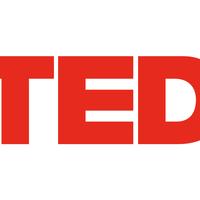Sarah Parcak: Archeology from space
When I was a child growing up in Maine, one of my favorite things to do was to look for sand dollars on the seashores of Maine, because my parents told me it would bring me luck. But you know, these shells, they're hard to find. They're covered in sand. They're difficult to see. However, overtime, I got used to looking for them. I started seeing shapes and patterns that helped me to collect them.
This grew into a passion for finding things, a love for the past and archaeology. And eventually when I started studying Egyptology, I realized that seeing with my naked eyes alone wasn't enough. Because all of the sudden in Egypt my beach had grown from a tiny beach in Maine to one eight hundred miles long next to the Nile, and my sand dollars had grown to the size of cities. This is really what brought me to using satellite imagery. For trying to map the past, I knew that I had to see differently.
So I want to show you an example of how we see differently using the infrared. This is a site located in the eastern Egyptian delta called Bendix. And the site visibly appears brown, but when we use the infrared and we process it, all of the sudden, using false color, the site appears as bright pink. What you are seeing are the actual chemical changes to the landscape caused by the building materials and activities of the ancient Egyptians.
What I want to share with you today is how we've used satellite data to find an ancient Egyptian city, called Itjtawy, missing for thousands of years. Itjtawy was ancient Egypt's capital for over four hundred years, at a period of time called the Middle Kingdom about four thousand years ago. The site is located in the Faiyum of Egypt and site is really important because in the Middle Kingdom there was this great renaissance for ancient Egyptian art, architecture and religion. Egyptologists have always known the site of Itjtawy was located somewhere near the pyramids of the two kings who built it, indicated within the red circles here, but somewhere within this massive flood plane. This area is huge -- it's four miles by three miles in size. The Nile used to flow right next to the city of Itjtawy, and as it shifted and changed and moved over time to the east, it covered over the city.
So, how do you find a buried city in a vast landscape? Finding it randomly would be the equivalent of locating a needle in a haystack, blindfolded wearing baseball mitts. So what we did is we used NASA topography data to map out the landscape, very subtle changes. We started to be able to see where the Nile used to flow. But you can see in more detail -- and even more interesting -- this very slight raised area seen within the circle up here, which we thought could possibly be the location of the city of Itjtawy.
So we collaborated with the Egyptian scientists to do coring work, which you see here. When I say coring, it's like ice coring, but instead of layers of climate change you're looking for layers of human occupation. And five meters down, underneath a thick layer of mud, we found a dense layer of pottery. What this shows is that at this possible location of Itjtawy, five meters down, we have of layer of occupation for several hundred years dating to the Middle Kingdom, dating to the exact period of time we think Itjtawy is. We also found work stone -- carnelian, quartz and agate that shows that there was a jewelers workshop here. These might not look like much, but when you think about the most common stones used in jewelry from the Middle Kingdom, these are the stones that were used.
So, we have a dense layer of occupation dating to the Middle Kingdom at this site. We also have evidence of an elite jewelers workshop, showing that whatever was there was a very important city. No Itjtawy was here yet, but we're going to be returning to the site in the near future to map it out. And even more importantly, we have funding to train young Egyptians in the use of satellite technology so they can be the ones making great discoveries as well.
So I wanted to end with my favorite quote from the Middle Kingdom -- it was probably written at the city of Itjtawy four thousand years ago. "Sharing knowledge is the greatest of all callings. There's nothing like it in the land." So as it turns out, TED was not founded in 1984 AD. (Laughter) Making ideas actually started in 1984 BC at a not-lost-for-long city, found from above. It certainly puts finding seashells by the seashore in perspective. Thank you very much. (Applause) Thank you. (Applause)

